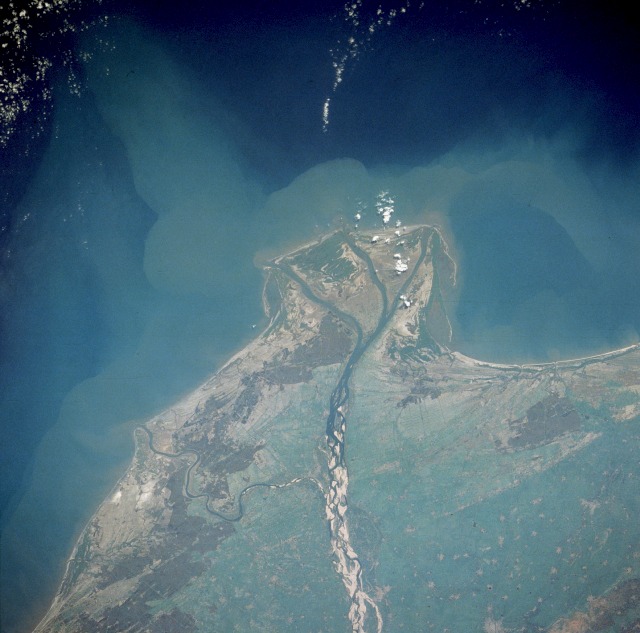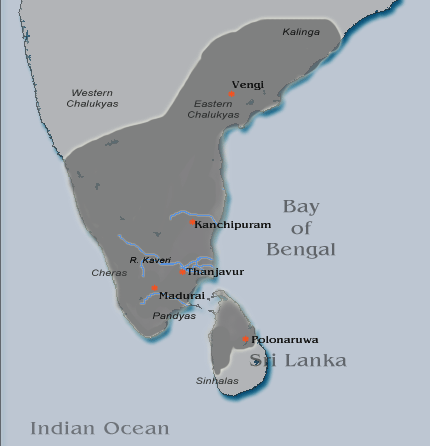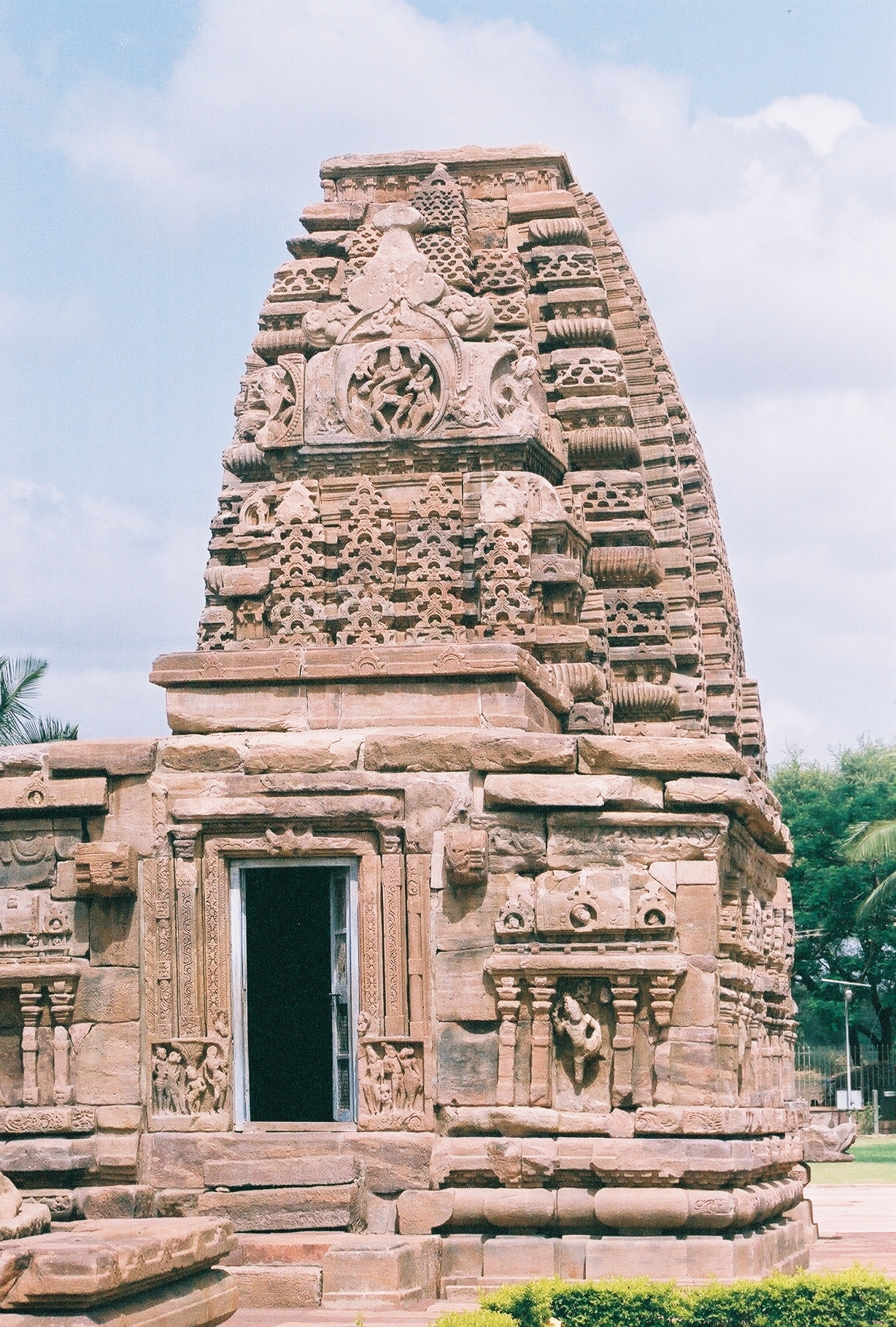|
Later Cholas
The Later Chola dynasty ruled the Chola Empire from 1070 C.E. until the demise of the empire in 1279 C. E. This dynasty was the product of decades of alliances based on marriages between the Cholas and the Eastern Chalukyas based in Vengi, and produced some of the greatest Chola emperors such as Kulothunga Chola I (1070–1120 C. E.). Even though the later Cholas are often referred to as Chalukya Cholas, there were two breaks in the line. Kulothunga Chola II and Rajadhiraja Chola II did not belong to the Chalukya Chola line. Kulottunga II was a grandson of Vikrama Chola and Rajadhiraja Chola II was not the son of Rajaraja Chola II. The extent of the Chola Empire during this period stretched from the island of Lanka to Kalinga in the northeast. The Empire also had active political and trade contacts with the maritime kingdoms of the Malay Archipelago and China. Eastern and Western animosity Towards the last quarter of tenth century C.E., the Deccan in South India was ruled b ... [...More Info...] [...Related Items...] OR: [Wikipedia] [Google] [Baidu] |
Kulothunga Territories A
Kulothunga was the name of several later Chola kings in India: * Kulothunga Chola I, reigned 1070–1120 * Kulothunga Chola II, reigned 1135–1150 * Kulothunga Chola III, reigned 1178–1218 {{hndis ... [...More Info...] [...Related Items...] OR: [Wikipedia] [Google] [Baidu] |
Bay Of Bengal
The Bay of Bengal is the northeastern part of the Indian Ocean, bounded on the west and northwest by India, on the north by Bangladesh, and on the east by Myanmar and the Andaman and Nicobar Islands of India. Its southern limit is a line between Sangaman Kanda, Sri Lanka, and the north westernmost point of Sumatra, Indonesia. It is the largest water region called a bay in the world. There are countries dependent on the Bay of Bengal in South Asia and Southeast Asia. During the existence of British India, it was named as the Bay of Bengal after the historic Bengal region. At the time, the Port of Kolkata served as the gateway to the Crown rule in India. Cox's Bazar, the longest sea beach in the world and Sundarbans, the largest mangrove forest and the natural habitat of the Bengal tiger, are located along the bay. The Bay of Bengal occupies an area of . A number of large rivers flow into the Bay of Bengal: the Ganges– Hooghly, the Padma, the Brahmaputra–Yamuna, the Barak� ... [...More Info...] [...Related Items...] OR: [Wikipedia] [Google] [Baidu] |
Rajaraja Narendra
Rajaraja Narendra () was the Eastern Chalukya king of the Vengi kingdom in South India. Rajaraja Narendra established the city Rajahmahendravaram. His period was famous for Social and Cultural heritage. During the time of Rajaraja Chola I, Rajahmahendravaram was sacked by Western Chalukya. The region witnessed the war between Western Chalukya and other neighbouring dynasties and political support from the Chola dynasty. Amangai Devi, daughter of Rajendra Chola I, married Rajaraja Narendra, who is the son of Vimaladitya Chalukya. The feudal relationship between the powerful Cholas and Chalukyas continued for three centuries from Arinjaya Chola onwards. The son of Rajaraja Narendra, Rajendra Chalukya, who is also called Kulottunga Chola I, went on to raid Kedah (Malaysia) for his maternal uncle. He became the king of the Chola empire in Gangaikondacholapuram when a political vacuum occurred and then merged the Chola and Chalukya dynasties. He was a liberal ruler as several land ... [...More Info...] [...Related Items...] OR: [Wikipedia] [Google] [Baidu] |
Rattapadi
The Kuntala country is an ancient Indian political region that probably included the western Deccan and some parts of central and south Karnataka (erstwhile north Mysore). Kuntala coins are available since estimated 600-450 BCE.> Kuntala formed one of the divisions of Southern India as late as 10th-12th centuries A.D. (other regions were:Chola, Chera, Pandya Tailanga and Andhra). Each developed its own culture and administration. The Talagunda inscriptions mention Balligavi and nearby regions as parts of Kuntala. Inscriptions in Kubaturu near Anavatti mention Kubaturu as the Kuntalanagara. Kuntala is revered as one of the three great countries of Chalukya period in inscriptions. Scriptural references Kannada Mahabharata mentions the visit of Krishna and Arjuna to Kuntala during Ashwamedha when Chandrahasa was the king of Kuntala who sends two of his children along with Arjuna for the further campaigns. Copperplates issued by the Yadavas of Devagiri mention the Nāgas as i ... [...More Info...] [...Related Items...] OR: [Wikipedia] [Google] [Baidu] |
Rajendra Chola I
Rajendra Chola I (; Middle Tamil: Rājēntira Cōḻaṉ; Classical Sanskrit: Rājēndradēva Cōla; Old Malay: ''Raja Suran''; c. 971 CE – 1044 CE), often referred to as Rajendra the Great, and also known as Gangaikonda Chola (Middle Tamil: ''Kaṅkaikoṇṭa Cōḻaṉ''; ), and Kadaram Kondan (Middle Tamil: Kaṭāram koṇṭāṉ ; ) was a Chola Emperor who reigned between 1014 and 1044 CE. He is considered the most significant ruler in early eleventh century South Asia for his role in patronising the arts, encouraging trade and expanding the Chola Empire to is greatest extent . Born in Thanjavur to Rajaraja I and his queen Vanavan Mahadevi, Rajendra first assumed royal power as co-regent with his father in 1012 until the later's death in 1014, after which he ascended the Chola throne in his own right. During his reign, the Chola Empire was the largest and most significant political, military, and economic force is in the Indian subcontinent, and extended its reach ... [...More Info...] [...Related Items...] OR: [Wikipedia] [Google] [Baidu] |
Guntur
Guntur () is a city and the administrative headquarters of Guntur district in the Indian state of Andhra Pradesh. Guntur is spread across 168.49 km square and is the third-largest city in the state. It is situated to the west of the Bay of Bengal, on the Eastern Coastal Plains. The city is the heartland of the state, located in the centre of Andhra Pradesh and making it a central part connecting different regions. It serves as a major hub for exports chilli, cotton and tobacco and has the largest chili market yard in Asia. It is a major transportation, education and commercial hub for the state. Guntur city is a municipal corporation and also the headquarters of Guntur East and Guntur West mandals in Guntur revenue division. The city region is a major part of Amaravati Metropolitan Region. census of India the city is the third most populous in the state with a population of 743,354. It is classified as a ''Y-grade'' city as per the Seventh Central Pay Commission. ... [...More Info...] [...Related Items...] OR: [Wikipedia] [Google] [Baidu] |
Satyashraya
Satyashraya (; ), also known as Sattiga or Irivabedanga, was a king of the Western Chalukya Empire. During a time of consolidation of the empire in the early 11th century, Satyashraya was involved in several battles with the Chola dynasty of Thanjavur, the Paramara dynasty and Chedi Kingdom of central India, and the Chaulukyas of Gujarat. The results of these wars were mixed, with victories and defeats.Kamath (1980). p.101 Even as a prince, during the rule of his father Tailapa II, Satyashraya had established himself as an ambitious warrior.Sastri(1955), p.164 Satyashraya patronised the great Kannada poet Ranna (one among the "three gems" or ''ratnatraya'' of classical Kannada literature) who compared his patron favourably to the Pandava prince Bhima (of the epic Mahabharatha) for his strength and valor in his epic poem ''Sahasabhimavijaya'' (''lit'', "Daring Bhima", the epic also known as ''Gadayuddha'').Narasimhacharya (1988), p.18Sastri (1955), p.356Kamath (1980) p.101 Satyas ... [...More Info...] [...Related Items...] OR: [Wikipedia] [Google] [Baidu] |
Tanjavur
Thanjavur (), also Tanjore, Pletcher 2010, p. 195 is a city in the Indian state of Tamil Nadu. Thanjavur is the 11th biggest city in Tamil Nadu. Thanjavur is an important center of South Indian religion, art, and architecture. Most of the Great Living Chola Temples, which are UNESCO World Heritage Monuments, are located in and around Thanjavur. The foremost among these, the Brihadeeswara Temple, is located in the centre of the city. Thanjavur is also home to Tanjore painting, a painting style unique to the region. Thanjavur is the headquarters of the Thanjavur District. The city is an important agricultural centre located in the Kaveri Delta and is known as the ''Rice bowl of Tamil Nadu''. Thanjavur is administered by a municipal corporation covering an area of and had a population of 290,720 in 2011. Roadways are the major means of transportation, while the city also has rail connectivity. The nearest airport is Tiruchirapalli International Airport, located away from th ... [...More Info...] [...Related Items...] OR: [Wikipedia] [Google] [Baidu] |
Rajaraja Chola
Rajaraja I (947 CE – 1014 CE), born Arunmozhi Varman or Arulmozhi Varman and often described as Raja Raja the Great or Raja Raja Chozhan was a Chola emperor who reigned from 985 CE to 1014 CE. He was the most powerful Tamil king in South India during his reign and is remembered for reinstating the Chola influence and ensuring its supremacy across the Indian Ocean. His extensive empire included vast regions of the Pandya country, the Chera country and northern Sri Lanka. He also acquired Lakshadweep and Thiladhunmadulu atoll, and part of the northern-most islands of the Maldives in the Indian Ocean. Campaigns against the Western Gangas and the Chalukyas extended the Chola authority as far as the Tungabhadra River. On the eastern coast, he battled with the Chalukyas for the possession of Vengi.A Journey through India's Past by Chandra Mauli Mani p.51 Rajaraja I, being an able administrator, also built the great Rajarajeshwaram Temple at the Chola capital Thanjavur. Th ... [...More Info...] [...Related Items...] OR: [Wikipedia] [Google] [Baidu] |
Pallavas
The Pallava dynasty existed from 275 CE to 897 CE, ruling a significant portion of South India, the Deccan, also known as Tondaimandalam. The dynasty rose to prominence after the downfall of the Satavahanas, Satavahana dynasty, with whom they had formerly served as feudatories. The Pallavas became a major South Indian power during the reign of Mahendravarman I (600–630 CE) and Narasimhavarman I (630–668 CE), and dominated the southern Andhra Pradesh, Andhra Region and the northern parts of the Ancient Tamil country, Tamil region for about 600 years, until the end of the 9th century. Throughout their reign, they remained in constant conflict with both the Chalukyas of Badami in the north, and the Tamil kingdoms of Chola Dynasty, Chola and Pandyas in the south. The Pallavas were finally defeated by the Chola ruler Aditya I in the 9th century CE. The Pallavas are most noted for their patronage of Hindu temple architecture, the finest example being the Shore Temple, a UNESCO W ... [...More Info...] [...Related Items...] OR: [Wikipedia] [Google] [Baidu] |
Rashtrakuta
Rashtrakuta (IAST: ') (r. 753-982 CE) was a royal Indian dynasty ruling large parts of the Indian subcontinent between the sixth and 10th centuries. The earliest known Rashtrakuta inscription is a 7th-century copper plate grant detailing their rule from manapur a city in Central or West India. Other ruling Rashtrakuta clans from the same period mentioned in inscriptions were the kings of Achalapur and the rulers of Kannauj. Several controversies exist regarding the origin of these early Rashtrakutas, their native homeland and their language. The Elichpur clan was a feudatory of the Badami Chalukyas, and during the rule of Dantidurga, it overthrew Chalukya Kirtivarman II and went on to build an empire with the Gulbarga region in modern Karnataka as its base. This clan came to be known as the Rashtrakutas of Manyakheta, rising to power in South India in 753 AD. At the same time the Pala dynasty of Bengal and the Prathihara dynasty of Malwa were gaining force in eastern and ... [...More Info...] [...Related Items...] OR: [Wikipedia] [Google] [Baidu] |








